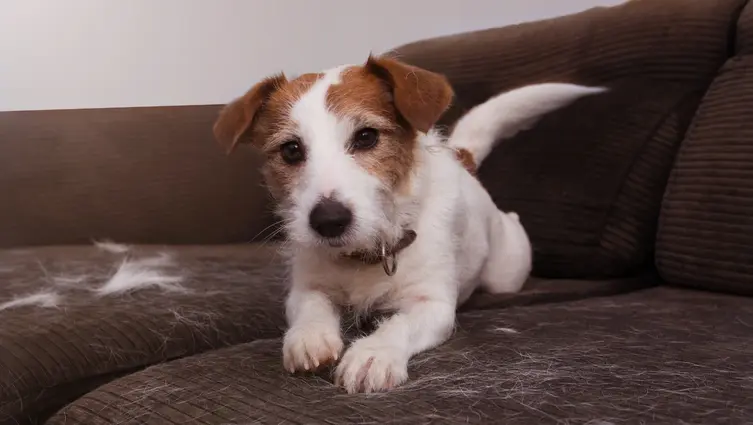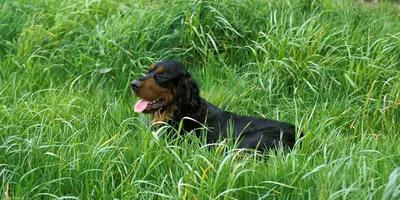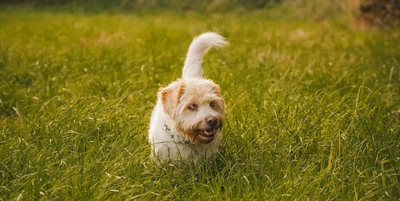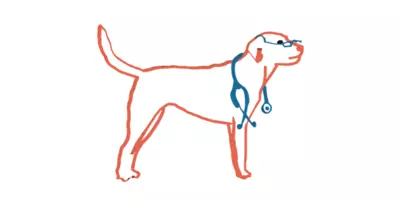Why Do Dogs Shed?
- 30 Apr 2025
- 6m read

Let’s clear one thing up: shedding is totally normal. It’s your dog’s natural way of letting go of old or damaged hair so new, healthy fur can grow in. Think of it like a wardrobe refresh - out with the old, in with the sleek and shiny.
Reasons Why Dogs Shed
How much fur ends up on your floor (or sofa, or jumper) can depend on a few key things:
Breed
Some breeds are born to be fluff machines. Dogs like Labradors, Golden Retrievers, Huskies and German Shepherds have what’s called a double coat, a soft undercoat beneath a more protective outer layer. These dogs tend to shed more, and more often, than their low-shedding cousins like Poodles or Shih Tzus. So if you’ve got a fluff-prone pooch, daily brushing and a lint roller are part of the package.
Season
Most dogs go through a big shed twice a year, once in spring and once in autumn. In spring, your pup will start to lose their thick winter coat to stay cool as the weather warms up. Come autumn, it’s time to fluff back up for the colder months. This is known as photoperiod shedding, their coat changes depending on how much daylight they’re getting.
Stress and hormones
Yep, dogs can stress-shed too. Big changes like moving house, a new family member (two-legged or four), loud noises or even just a trip to the vet can cause your pup to drop a bit more fur than usual. Hormonal changes, such as pregnancy or going into heat, can also trigger temporary hair loss.
Diet and health
Sometimes, shedding can be a sign that something’s not quite right. If your dog is shedding a lot or you spot bald patches, flaky skin or redness, it could be linked to allergies, infections, parasites or even their diet. Poor nutrition - especially a lack of quality protein, essential fats, and vitamins - can cause hair to become dry, brittle, and more likely to fall out.
A healthy coat starts from within, so feeding your dog high-quality, balanced meals is one of the best ways to support their skin and fur. (Psst… that’s where Butternut Box comes in.)
Why is My Dog Shedding So Much?
It’s totally normal to spot a few tufts of fluff floating around the house, shedding is just a part of life with a dog. But when you start noticing more hair than usual (we’re talking clumps, bald patches, or fur loss that seems out of character), it might be time to dig a little deeper.
If your dog’s shedding has changed suddenly or seems excessive — especially if you’re seeing bald spots, irritated skin or other changes in behaviour — it could be down to something more than just the seasons.
Here are some common culprits behind unexpected shedding:
Parasites: Fleas, mites or lice can irritate the skin and cause dogs to scratch and bite, which can lead to hair loss.
Skin infections: Bacterial or fungal infections (like ringworm) can cause patchy fur, redness or flaking.
Allergies: Dogs can react to food, pollen, cleaning products, or even flea saliva. Allergic reactions often show up through itchy skin and increased shedding.
Stress or anxiety: Big changes (like moving house, new pets, or loud noises) can trigger stress-related shedding — especially in more sensitive pups.
Hormonal changes: Conditions like hypothyroidism or changes during heat cycles, pregnancy or post-birth can also lead to temporary hair loss.
If you're noticing these signs or if the shedding just doesn’t seem quite right, it’s best to get your vet involved. They’ll be able to check things over and rule out anything serious.
How to Decrease Dog Shedding?
Regular grooming is needed to keep your dog’s coat under control. Using a soft-bristled brush on your pooch once a week will help to tame unruly strands, as well as getting rid of any dander and dirt.
While you can’t stop shedding altogether (it’s a natural part of being a pup), you can keep it under control with a few simple habits.
Brush regularly
Brushing helps remove loose hair before it ends up on your clothes, floor or furniture. It also spreads natural oils across your dog’s coat, keeping it healthy and shiny.
Aim for at least once or twice a week, or more often if your dog has a thick or double coat. The right brush makes all the difference — go for soft-bristle brushes for short-haired pups and a de-shedding tool for fluffier coats.
Feed a balanced diet
Feeding your dog a nutritionally complete and balanced diet is one of the most important ways to keep their coat in tip-top condition. A good diet should include quality protein, healthy fats, and fibre-rich ingredients like veg (carrots are a fan favourite) and slow-release energy sources, such as lentils or quinoa.
When dogs aren’t getting the nutrients they need, their fur can become dry, brittle and more likely to fall out. That’s why fresh, gently cooked food made with real, recognisable ingredients is such a game-changer when it comes to coat health.
Butternut Box meals are tailored to your dog’s individual needs. When you sign up, we’ll ask about things like skin issues or excessive shedding to help us recommend meals that support a glossy coat — like our Salmon To Love recipe, packed with omega-3 fatty acids to nourish skin and promote healthy hair from the inside out.
Keep your dog hydrated
Water helps keep the skin hydrated, which in turn reduces dryness and shedding. Make sure your dog has constant access to fresh water. If your pup isn’t a big drinker, adding a splash of warm water to their food can help boost their intake.
Bathe occasionally
A bath every now and then can help remove excess fur, dirt and dander — but don’t overdo it. Too much washing can dry out your dog’s skin and lead to more shedding. Aim for every 4–6 weeks, or when needed. Always use a mild, dog-safe shampoo with gentle ingredients.
Minimise stress
Stress and anxiety can cause dogs to shed more than usual. Try to keep your dog’s environment calm and predictable, and make sure they’re getting plenty of exercise, attention and enrichment. If they’re prone to nervousness, like during fireworks or travel, speak to your vet for advice on how to support them.
Visit the vet if you're concerned
If your dog’s shedding seems excessive, or if they have bald patches, irritated skin or changes in behaviour, it’s worth getting them checked by your vet. Underlying issues like allergies, parasites or infections could be the cause and early treatment is always best.
Which Dog Breeds Don’t Shed?
We’ve rounded up a complete guide to small, medium and large dog breeds that shed very little, you can read it here.




.png)